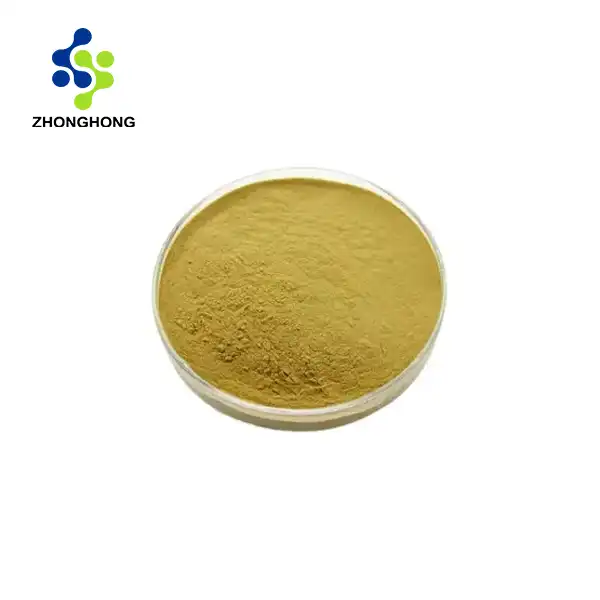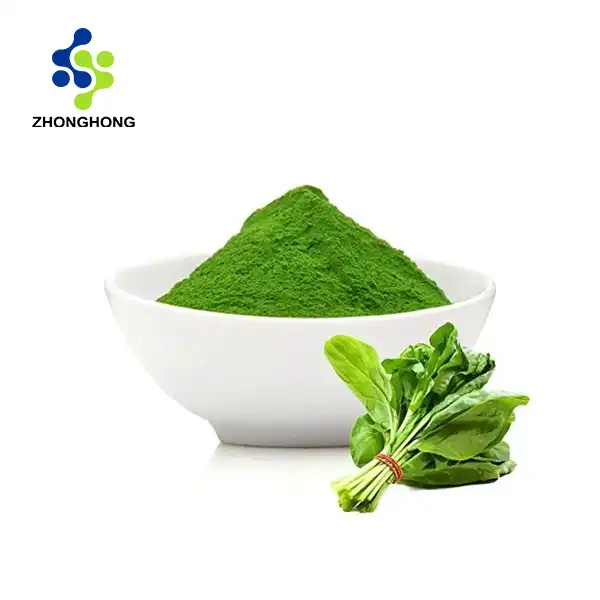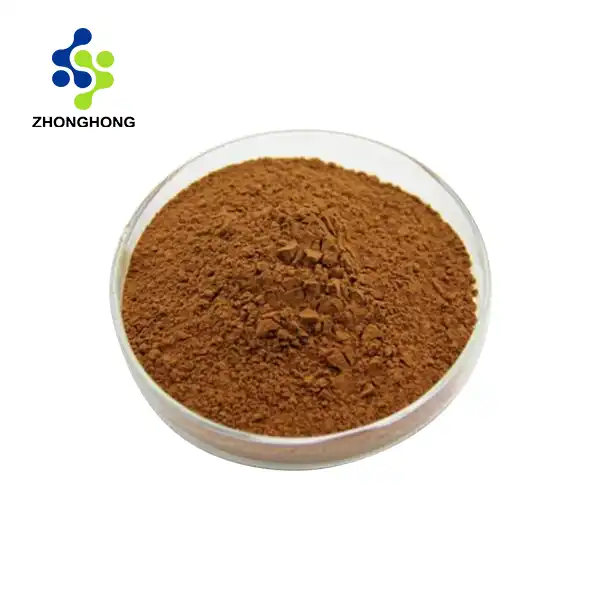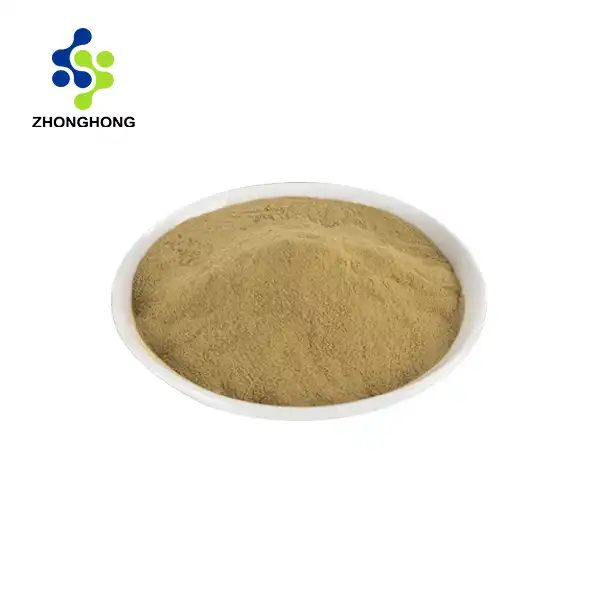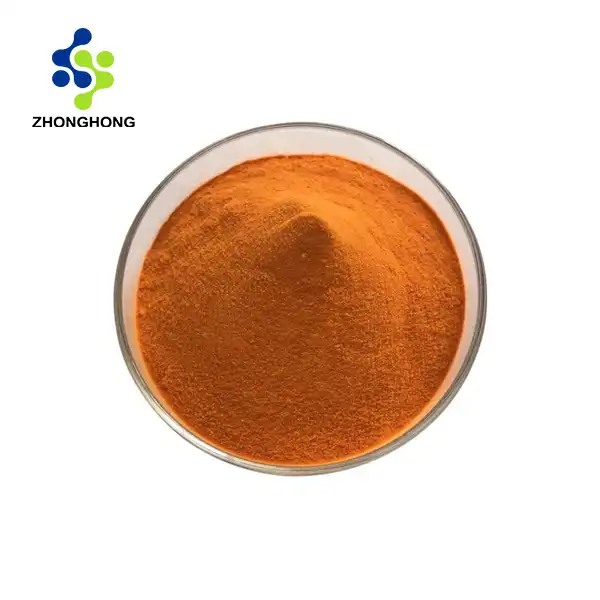What is osthol used for?
2024-11-15 21:04:54
Osthol, a natural coumarin compound found in various plants, has attracted considerable interest due to its diverse therapeutic potential. This bioactive substance is widely explored in pharmaceutical research, traditional medicine, and the development of nutraceuticals, thanks to its extensive range of biological activities. The versatility of osthol in addressing various health concerns highlights its significance in both contemporary and traditional therapeutic practices.
Pharmacological Properties of Osthol

Anti-inflammatory and Antioxidant Effects
Osthol's anti-inflammatory properties stem from its ability to modulate various inflammatory pathways in the body. Research has shown that it can inhibit the production of pro-inflammatory cytokines and reduce the activation of inflammatory enzymes. This makes osthol a potential therapeutic agent for chronic inflammatory conditions such as arthritis and inflammatory bowel diseases. The compound's antioxidant capabilities are equally impressive, as it can neutralize harmful free radicals and bolster the body's natural antioxidant defenses. By combating oxidative stress, osthol may help prevent cellular damage associated with aging and various chronic diseases.
Neuroprotective Potential
The neuroprotective effects of osthol have been a subject of increasing interest in neuroscience research. Studies have demonstrated that osthol can cross the blood-brain barrier and exert protective effects on neuronal cells. It has shown promise in mitigating the progression of neurodegenerative disorders like Alzheimer's and Parkinson's diseases. Osthol achieves this by reducing oxidative stress in the brain, inhibiting the formation of neurotoxic protein aggregates, and promoting the survival of neurons. Additionally, its ability to enhance cognitive function and memory has made it a compound of interest for cognitive enhancement and the treatment of age-related cognitive decline.
Cardiovascular Benefits
In the realm of cardiovascular health, osthol has demonstrated several beneficial effects. It has been shown to possess vasodilatory properties, which can help improve blood flow and reduce hypertension. Research indicates that osthol can inhibit platelet aggregation, potentially reducing the risk of thrombosis and associated cardiovascular events. Furthermore, its ability to modulate lipid metabolism may contribute to improved cholesterol profiles, making it a promising natural compound for cardiovascular disease prevention and management. These multifaceted cardiovascular benefits highlight osthol's potential as a complementary approach in maintaining heart health.
Applications in Traditional Medicine
Historical Use in Chinese Medicine
Osthol has a rich history in traditional Chinese medicine, where it has been utilized for centuries. The compound is found in several plants traditionally used in Chinese herbal remedies, most notably in the fruits of Cnidium monnieri, known as "She Chuang Zi." In this context, osthol-containing preparations have been employed to treat a variety of ailments, including skin conditions, gynecological disorders, and respiratory issues. The traditional use of osthol in Chinese medicine has provided valuable insights into its potential therapeutic applications, guiding modern research into its pharmacological properties.
Analgesic and Anti-spasmodic Properties
One of the primary traditional uses of osthol has been for its analgesic and anti-spasmodic effects. In various traditional medicine systems, osthol-containing plants have been used to alleviate pain and muscle spasms. Modern scientific investigations have corroborated these traditional applications, revealing that osthol can modulate pain perception pathways and reduce muscle contractions. These properties make osthol a subject of interest in developing natural pain management strategies and treatments for conditions characterized by muscle spasms, such as menstrual cramps and certain gastrointestinal disorders.
Dermatological Applications
Traditional medicine practitioners have long recognized the dermatological benefits of osthol. It has been used in various formulations to treat skin conditions such as eczema, psoriasis, and fungal infections. The compound's anti-inflammatory and antioxidant properties are believed to contribute to its skin-healing effects. Modern research has begun to explore these traditional uses, investigating osthol's potential in developing new dermatological treatments. Additionally, the compound's ability to protect against UV-induced skin damage and its potential anti-aging effects have sparked interest in its use in cosmetic formulations.
Emerging Research and Future Prospects
Anticancer Potential
Recent research has uncovered promising anticancer properties of osthol, opening new avenues for its potential use in oncology. Studies have shown that osthol can inhibit the proliferation of various cancer cell lines, including those of breast, lung, and liver cancers. The compound appears to work through multiple mechanisms, including inducing apoptosis (programmed cell death) in cancer cells, inhibiting angiogenesis (the formation of new blood vessels that feed tumors), and modulating cell signaling pathways involved in cancer progression. While these findings are primarily from in vitro and animal studies, they provide a strong foundation for further investigation into osthol's potential as an adjunct or alternative treatment in cancer therapy.
Bone Health and Osteoporosis
Osthol's effects on bone metabolism have attracted significant attention in the field of orthopedic research. Studies have demonstrated that osthol can stimulate osteoblast differentiation and activity, promoting bone formation. Simultaneously, it has been shown to inhibit osteoclast function, thereby reducing bone resorption. This dual action makes osthol a promising candidate for developing new treatments for osteoporosis and other bone-related disorders. Research is ongoing to further elucidate the mechanisms behind osthol's bone-protective effects and to explore its potential in combination with existing osteoporosis therapies.
Metabolic Disorders and Diabetes
Emerging research suggests that osthol may have beneficial effects in metabolic disorders, particularly diabetes. Studies have shown that osthol can improve insulin sensitivity and glucose uptake in cells, potentially helping to regulate blood sugar levels. Additionally, its anti-inflammatory and antioxidant properties may help mitigate some of the complications associated with diabetes, such as diabetic nephropathy and neuropathy. While more research is needed to fully understand osthol's effects on metabolic health, these initial findings suggest it could play a role in developing new strategies for managing diabetes and related metabolic disorders.
Conclusion
Osthol, with its diverse pharmacological properties and traditional medicinal uses, stands as a promising natural compound with wide-ranging therapeutic potential. From its anti-inflammatory and neuroprotective effects to its emerging roles in cancer research and metabolic health, osthol continues to captivate researchers and healthcare professionals alike. As scientific investigations progress, we may see osthol playing an increasingly important role in developing new treatments for various health conditions, bridging the gap between traditional wisdom and modern medicine. If you want to get more information about this product, you can contact us at liaodaohai@gmail.com.
References
1. Zhang, L., et al. (2020). Osthol: A review on its bioactivities, pharmacological properties, and potential as alternative medicine. Evidence-Based Complementary and Alternative Medicine.
2. Wang, Y., et al. (2019). The anti-inflammatory and antioxidant activities of osthol: Mechanisms and therapeutic potential. Oxidative Medicine and Cellular Longevity.
3. Li, X., et al. (2018). Neuroprotective effects of osthol: Role of oxidative stress, apoptosis, and autophagy. Neurochemistry International.
4. Chen, H., et al. (2021). Osthol in cardiovascular and cerebrovascular protection: Molecular mechanisms and therapeutic potential. Pharmacology & Therapeutics.
5. Liu, J., et al. (2017). Traditional uses, pharmacological activities, and safety of Cnidium monnieri (L.) Cusson: A comprehensive review. Journal of Ethnopharmacology.
6. Zheng, Y., et al. (2022). Osthol: A natural coumarin with promising anticancer activities. Frontiers in Pharmacology.
_1728976869676.webp)


